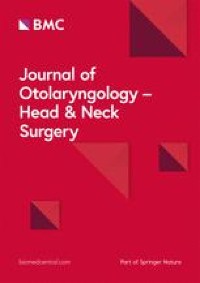|
Αρχειοθήκη ιστολογίου
-
►
2023
(269)
- ► Φεβρουαρίου (133)
- ► Ιανουαρίου (136)
-
▼
2022
(2046)
- ► Δεκεμβρίου (165)
- ► Σεπτεμβρίου (161)
-
▼
Φεβρουαρίου
(165)
-
▼
Φεβ 06
(9)
- Cephalic vein transposition in head-and-neck recon...
- Effect of monocarboxylate transporter-1 on the bio...
- Updates in hormone-receptor-positive, human epider...
- A comprehensive analysis of intratumor microbiome ...
- Mutations within the putative protease domain of t...
- 18F-Fluorodeoxyglucose Positron Emission Tomograph...
- Myocardial Ischemia on MPI SPECT in a Patient with...
- Hybrid Renal Cortical Imaging with Single Photon E...
- Hereditary oral squamous cell carcinoma associated...
-
▼
Φεβ 06
(9)
-
►
2021
(3028)
- ► Δεκεμβρίου (135)
- ► Σεπτεμβρίου (182)
- ► Φεβρουαρίου (324)
-
►
2020
(1051)
- ► Δεκεμβρίου (292)
- ► Σεπτεμβρίου (60)
- ► Φεβρουαρίου (28)
-
►
2019
(2277)
- ► Δεκεμβρίου (18)
- ► Σεπτεμβρίου (54)
- ► Φεβρουαρίου (89)
-
►
2018
(26280)
- ► Δεκεμβρίου (189)
- ► Φεβρουαρίου (6130)
- ► Ιανουαρίου (7050)
-
►
2017
(33948)
- ► Δεκεμβρίου (6715)
- ► Σεπτεμβρίου (6470)
-
►
2016
(4179)
- ► Σεπτεμβρίου (638)
- ► Φεβρουαρίου (526)
- ► Ιανουαρίου (517)
Κυριακή 6 Φεβρουαρίου 2022
Cephalic vein transposition in head-and-neck reconstruction
Effect of monocarboxylate transporter-1 on the biological behavior of iodine-refractory thyroid carcinoma
|
Updates in hormone-receptor-positive, human epidermal growth factor receptor 2 (HER2)-negative advanced breast cancer in 2021
|
A comprehensive analysis of intratumor microbiome in head and neck squamous cell carcinoma
|
Mutations within the putative protease domain of the human FAM111B gene may predict disease severity and poor prognosis: A review of POIKTMP cases
|
18F-Fluorodeoxyglucose Positron Emission Tomography/Magnetic Resonance Imaging Appearance of Gastrointestinal Behcet's Disease
|
Myocardial Ischemia on MPI SPECT in a Patient with Acute Myeloid Leukemia Without Significant Coronary Artery Disease
|
Hybrid Renal Cortical Imaging with Single Photon Emission Computerized Tomography/Computed Tomography in a Pediatric Patient with Severe Caudal Regression Syndrome
|
Hereditary oral squamous cell carcinoma associated with CDKN2A germline mutation: a case report
|




